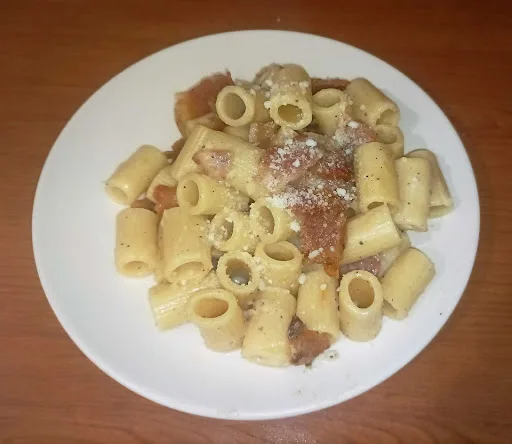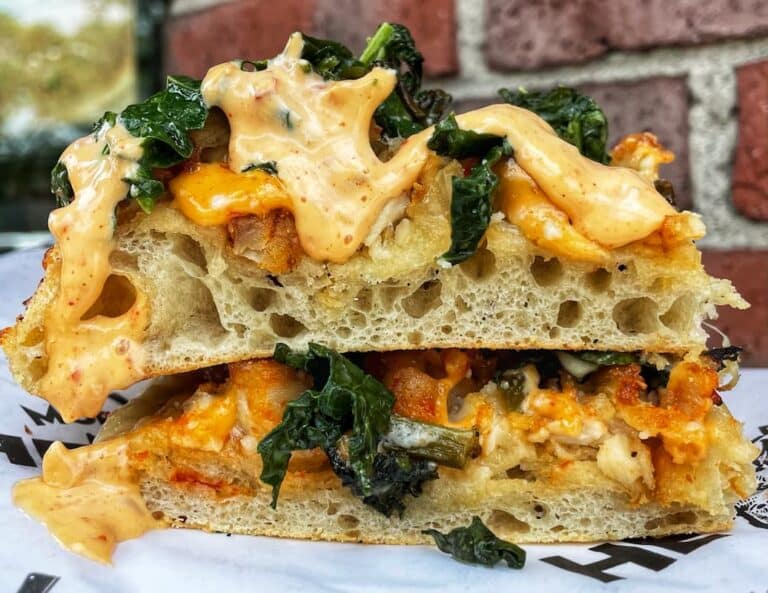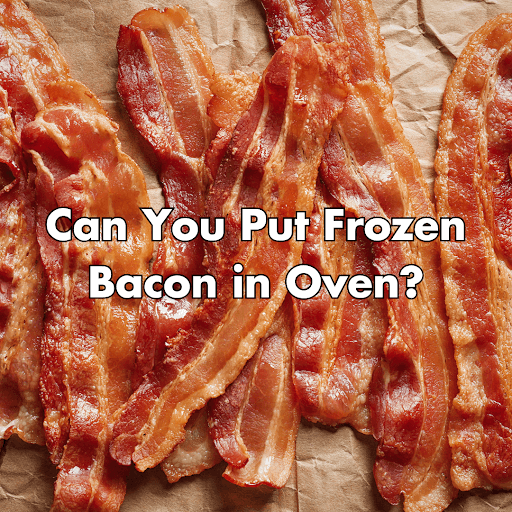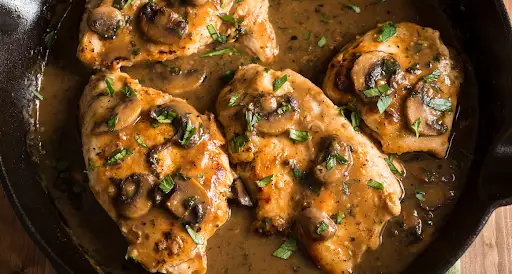I may have just found my favorite pasta alla gricia recipe.
I was doing research for my next article, when all of a sudden I got a notification. One of my favorite chefs was sharing his tricks to make the perfect pasta alla gricia. Needless to say, I ended up in a rabbit hole of tutorials and articles from different cooks that I follow. About an hour later, I got all my notes together and decided to incorporate them in my usual recipe the next day.
The result was delicious.
Pasta alla gricia looks like a very simple dish, but there are some things to look out for, if you want it to be perfect. In the next few minutes, I’ll share everything you need to know.
The origins of pasta alla gricia
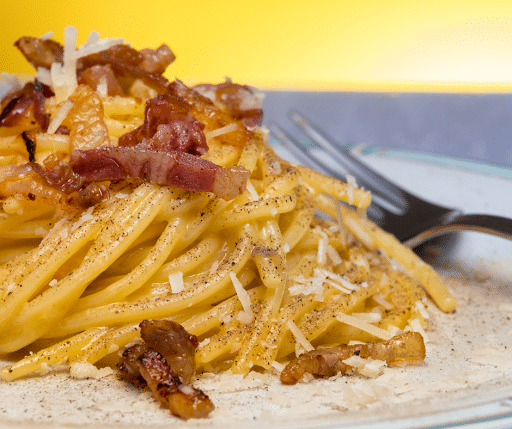
Like many other classic Roman pastas, this simple yet scrumptious dish isn’t actually originally from Rome.
It originated centuries ago among the shepherds of the province of Rieti, in the Apennine mountains. The same people to which we owe pasta all’amatriciana and cacio e pepe. In fact, pasta alla gricia derives from a progenitor of amatriciana made without tomato sauce. Due to the absence of tomato, it is also known as “white amatriciana“. (but if you ask me, it is more similar to cacio e pepe, with the addition of tasty guanciale meat) 😀
These shepherds used to migrate to the nearby regions during the transhumance season, bringing with them only a handful of ingredients that were easy to store, like pecorino cheese, dry pasta, black pepper, and guanciale.
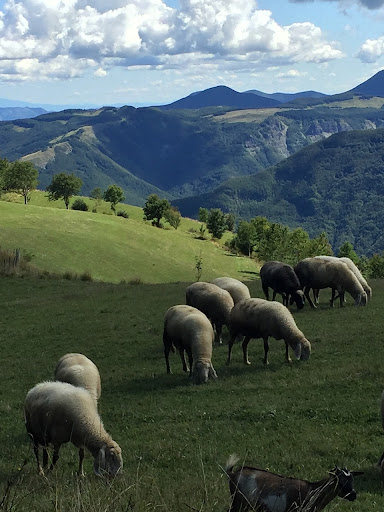
These shepherds regularly migrated as far as Rome, and their dishes were soon adopted by the local population who appreciated their taste and simplicity.
Come to think of it, this union was bound to happen. Roman cuisine is full of super tasty dishes made with a few simple ingredients and no overly fancy methods. Of course dishes like amatriciana or cacio e pepe would have found a place in the hearts of Romans.
The original recipe for gricia probably involved simply combining the ingredients together while the pasta was cooking. However, as the dish became more and more important in Roman cuisine and was also adopted by experienced cooks, the traditional recipe began to incorporate a number of tricks that enhanced its flavors. So, as I said before, although it remains a simple dish, you have to pay attention to a couple of little things to turn it from good to irresistible.
This brings us back to the topic of this post.
The day after taking all my notes, I attempted to incorporate the tricks I learned into a single recipe. And not to brag, but the result was amazing, to the point that I will hardly ever make pasta alla gricia any other way.
Here’s what I did.
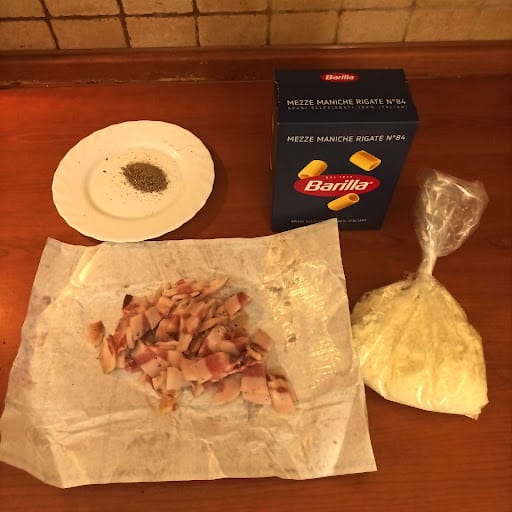
What you’ll need
Here are the main ingredients for pasta alla gricia.
Dry pasta: unlike other traditional pasta dishes, there isn’t a specific single type of pasta to use for this recipe. From a traditional point of view, pasta alla gricia is commonly made with either bucatini, spaghetti, or mezze maniche. The first two are long pasta shapes, while the latter is short and thick. It is also very common to use tonnarelli, rigatoni, or even paccheri. Other possible good choices are penne or tortiglioni, but they are less traditional.
Guanciale: the star of the show. Guanciale is a type of cured meat made from pork jowl. It is often mistaken/switched for pancetta or bacon, but it has a different texture and a more intense, spicier taste. Originally it was not considered a noble cut, so farmers kept it for themselves and stored it for long periods by coating it with salt and pepper. Nowadays, it’s the main ingredient in all the classic Roman pasta dishes.
Finding PGI Italian guanciale in the US can be challenging, but there are good local alternatives available in many stores. I’ve heard that Fortuna Guanciale is quite good, although I haven’t tried it myself. If you have, please let me know in the comments – I’m curious to hear your experience.
Pecorino Romano Cheese: shepherds who migrated to Lazio from the province of Rieti certainly used pecorino produced in their lands, which nowadays is more delicate and somewhat less savory than Roman pecorino. However, pasta alla gricia has become so associated with Roman cuisine that Pecorino Romano is now the standard way to go.
White Wine: to deglaze the fat from the guanciale. Many people avoid this step, but I find it makes the dish more appetizing and flavorful.
Fresh Black Pepper: I like to use a mix of finely and coarsely ground pepper, but feel free to use the type of grind that you like more.
Coarse salt & water: to boil the pasta.
You may notice that this recipe doesn’t include olive oil. That’s because the fat from the guanciale is enough to grease the pan that you’ll use for the sauce.
Now, let’s dive right into making the perfect pasta alla gricia!
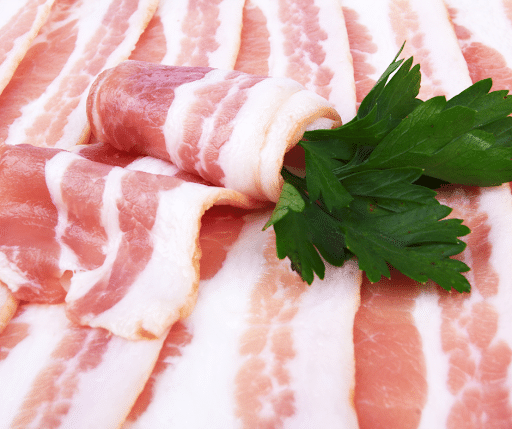
How to make pasta alla gricia: step-by-step instructions
First of all, let’s prepare the ingredients.
Remove the rind and pepper coating from the guanciale with a kitchen knife, making sure to clean it well. Then, cut it into strips, without removing the fat. After that, grate the pecorino finely in a small bowl and set it aside. Finally, grind the black pepper and toast it for 30-60 seconds on a large iron pan or wok.
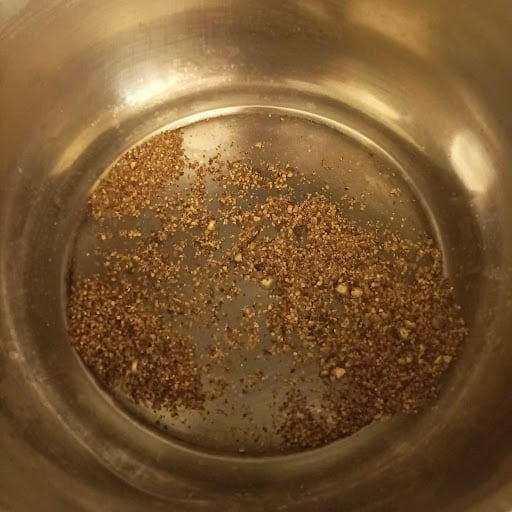
Once all the ingredients are ready, it’s time to start cooking.
Rinse the iron pan and then place it on the stove, leaving a very thin layer of water on its surface. Turn on the heat, and wait for the water to start boiling. When it does, add the guanciale and turn the heat down to low. This step is not very orthodox, but it will make the pores of the meat close up, keeping all its tasty juices inside.
Now, keep cooking the guanciale, stirring continuously with a wooden spoon or a rubber spatula. As the fat melts, bring the stove to medium heat.
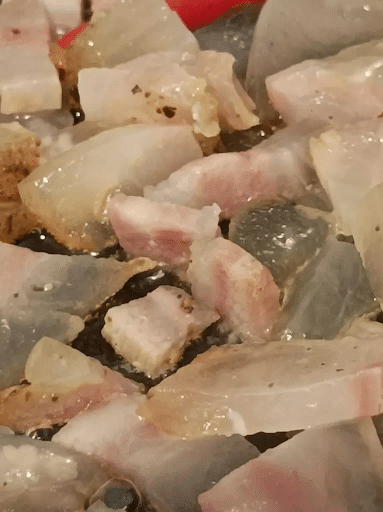
If you are unfamiliar with cooking guanciale, pay attention to its edges to tell when it is ready. At some point, the fatty edges will become almost transparent, then slightly golden brown.
That is the signal that the meat is ready.
Remove it from the pan with a slotted spoon, and set it aside on a plate covered with a kitchen towel. As the guanciale strips dry, they will become a little crispy, but if you don’t wait too long before removing them from the heat they will retain a slightly more tender core.
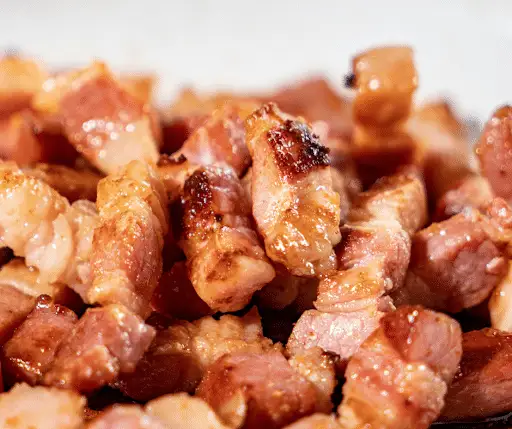
After you removed all the guanciale, deglaze the fat in the pan with some white wine, and turn the heat to high. While the alcohol evaporates, fill a pot with water and bring it to a boil.
In the meantime, pour half of the fat in a small bowl and set it aside. You don’t need all of it for this dish.
Here’s a handy tip: Discard half of the reserved fat, and mix the rest with 2 or 3 tbsp of grated pecorino – pretty much as you would with a cacio e pepe, only with fat instead of water. This, too, is not a very orthodox step, but it will make your sauce creamier, and I think the shepherds of Rieti would have approved 😀
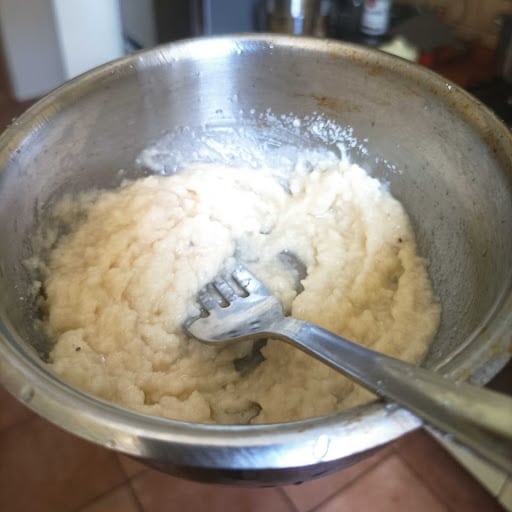
We’re almost close now. When the water boils, add the salt, wait for it to dissolve, and then add the pasta as well. Only, this time don’t boil it according to the package instructions. Drain it about 3 minutes before the reported time without throwing away the cooking water, and add it to the pan with the guanciale fat. This way, it will absorb all the flavors of the meat.
Now add a ladle of cooking water or two, and keep cooking until the pasta is al dente, stirring often. As the pasta cooks, the starch in the water will create a delightful emulsion with the guanciale fat, for which you’re going to thank me later.

When the pasta is ready, add the guanciale and the grated pecorino, and toss everything together. The fat and starch mix will bond with the cheese, resulting in a delicious, creamy sauce. I like to divide the process in two parts (adding, tossing, adding, and tossing again) to ensure that each ingredient is evenly distributed, but it’s not mandatory.
Finally, add the reserved fat and pecorino cream that you made before on top of the pasta, along with the toasted black pepper you set aside at the beginning of the process, and mix well. Voilà, your pasta alla gricia is ready to be served!
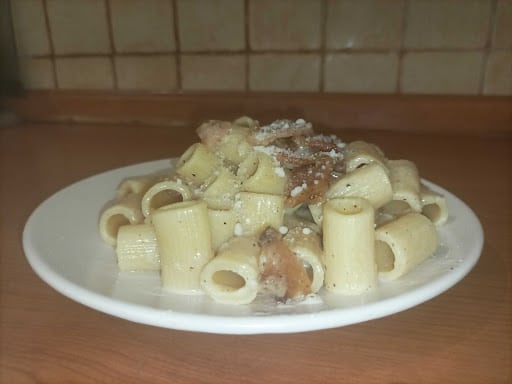
With the right ingredients and techniques, you can create a perfect pasta alla gricia anytime you want. And to further assist you, I’ve made a recipe card that you can save and print. This way, you can have it with you whenever you need it. You can also use it as a shopping list and scale the ingredients from your phone according to your needs. I hope you find it useful.
Now, that’s pretty much everything for today. If you liked my recipe, let me know your thoughts in the comments. Happy cooking!
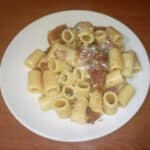
Pasta Alla Gricia
5 Stars 4 Stars 3 Stars 2 Stars 1 Star
5 from 1 review
- Author: Mortadella Head
- Total Time: 37 minutes
- Yield: 4 1x
Ingredients
12 oz dry pasta (choose between: tonnarelli, spaghetti, bucatini, rigatoni, mezze maniche, or paccheri)
8 oz guanciale
8 oz pecorino romano cheese
1/4 cup white wine
ground black pepper to taste
coarse salt to taste
Instructions
- Toast freshly ground pepper for 30 to 60 seconds in an iron saucepan on low heat. Set aside on a small plate and wash the pan afterward.
- Put the pan back on the stove, leaving a very thin layer of water on it.
- When the water starts boiling, add the guanciale. The hot water will make its pores close, causing all the sweet juices to be seared in.
- Cook guanciale on medium-low heat, gently cuddling it with a rubber spatula or a wooden spoon. Keep cooking until the fat melts and the meat on the edges of the strips becomes golden brown.
- Drain the guanciale strips with a slotted spoon and put aside on a plate covered with a couple paper towels.
- Take half the fat out of the pan, and put it into a small bowl. Then throw away half of it, and mix the rest with some pecorino cheese to create a smooth cream.
- Deglaze the remaining fat in the saucepan with white wine, turn the heat to high, and let the alcohol evaporate.
- In the meantime, bring a large pot of water to a boil, salt it, and add the pasta.
- This time, you don’t have to cook the pasta accordingly with the package instructions. Drain the pasta 3-4 minutes before the time reported WITHOUT tossing away the boiling water, then add it to the saucepan with the fat. This way, it will absorb the flavors of guanciale.
- Add a couple of ladles of cooking water to keep cooking until al dente. The starch in the pasta water will create an emulsion with the fat of the guanciale, making your dish creamier. Add more if necessary until the pasta is ready, but don’t overdo it.
- When the pasta is ready, add the guanciale and half of the grated pecorino cheese.
- Toss the pasta, or mix it very well if you don’t feel comfortable doing it.
- Add the rest of the pecorino, leaving out only a small part for plating. Add the fat and cheese mix that you made before.
Toss again, serve, and enjoy. Buon appetito!
- Prep Time: 25 Minutes
- Cook Time: 12 Minutes
- Category: Pasta
- Method: Boiling
- Cuisine: Italian

